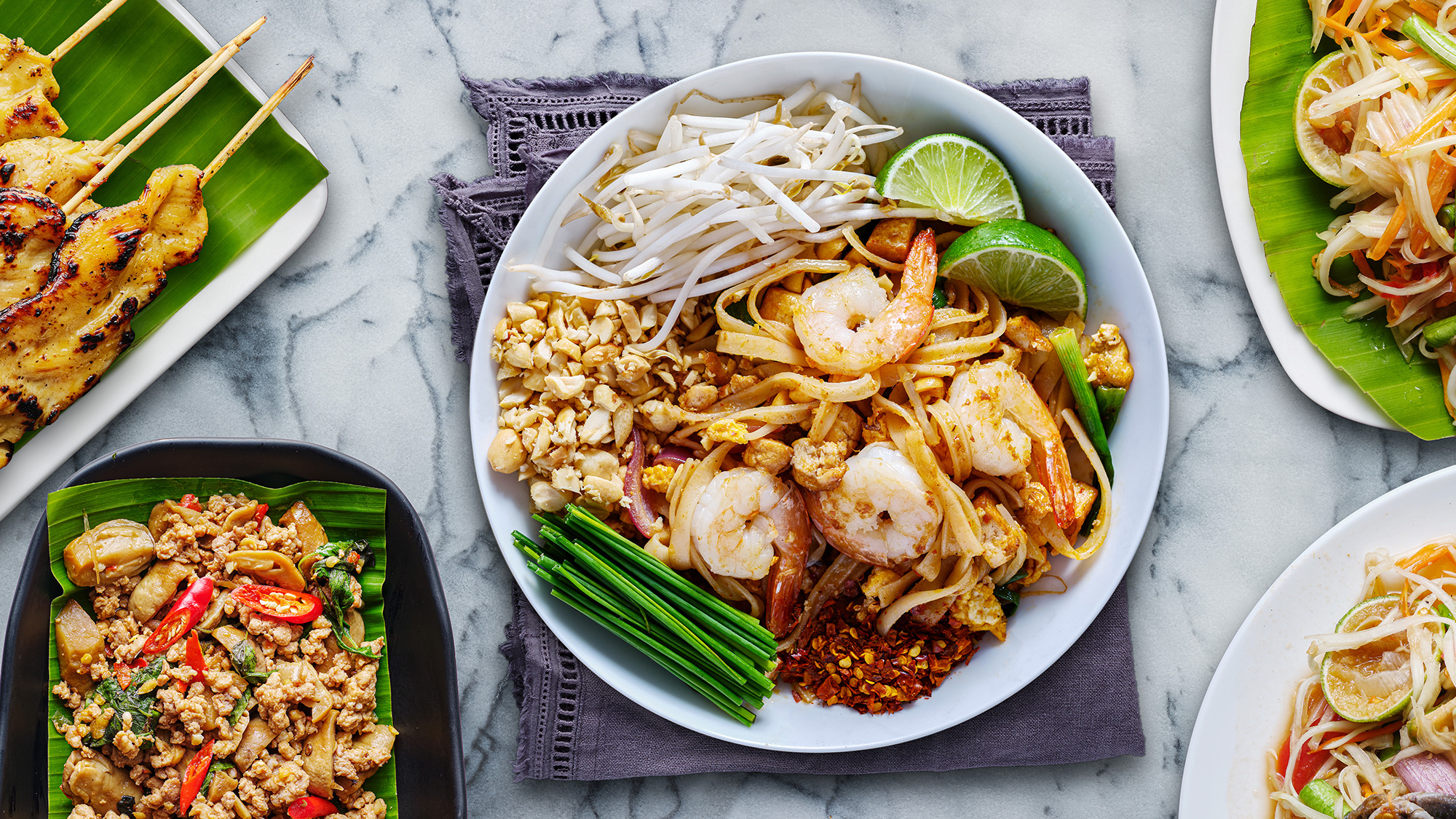
This article is part of our Cocktail Chatter series, where we dive into the wild, weird, and wondrous corners of history to share over a cocktail and impress your friends.
Food is undeniably one of the world’s most commanding forces, and it does more than simply sustain us. Sitting down for a meal can be a moment of reprieve; a time to reconnect with yourself and others outside of life’s usual hustle and bustle. For many, meals are also a vessel for exploration, with each plate serving as a one-way ticket to any destination on the planet. It’s immersive, it’s delicious, and in many cases, it’s just pure fun. In short, food is powerful — and governments everywhere know it.
Across the globe, many countries have implemented some form of gastrodiplomacy (also known as culinary diplomacy) in an attempt to build foreign connections, improve public perception of the nation, and convince travelers to visit. No government has been quite as successful in this endeavor as Thailand’s, which launched the Global Thai initiative in 2002 to expand the presence of Thai cuisine worldwide.
To achieve this goal, the government implemented dozens of programs across several bureaus, each of which was designed to give citizens the resources they need to operate a restaurant abroad. The Ministry of Labour’s Department of Skill Development (DSD) started offering cooking classes for those looking to develop their knowledge of the cuisine and prowess in the kitchen. The courses also included lessons on how to purchase and preserve ingredients, maintain a safe work environment, and operate a restaurant. Students were even taught basic English skills to take with them abroad.
Ensuring the food these students were preparing would be noticed and enjoyed by foreigners was also a top priority. As such, the Ministry of Commerce conducted extensive research in target markets abroad to develop an understanding of local palates. This knowledge was then used to create recipes specifically geared toward these potential consumers. Additionally, the government body paid for members of Thai culinary institutes to fly abroad and train chefs in foreign restaurants on the Southeast Asian nation’s cuisine.
The ministry even developed what are essentially prototypes of restaurants for potential owners or investors to choose from to jumpstart their planning. The entry-level Elephant Jump was designed as a fast-casual option, running future patrons just $5 to $15 for a meal. The middle tier was Cool Basil, promising a $15 to $25 meal per person, and at the top was Golden Leaf, which offered traditional Thai fabrics and decorations for decor and would cost each guest between $25 and $30. The program also gave way to the creation of the Thai Select certification, which recognizes restaurants and pre-packaged goods that maintain Thai authenticity.
To further prepare citizens looking to set up shop overseas, the Ministry of Public Health published “A Manual for Thai Chefs Going Abroad” in 2002 to provide nationals with information on local palates and how to recruit and train employees. When citizens were finally ready to take the leap and open their restaurants, the government covered the funding, as the Export-Import Bank of Thailand put together special financing plans that were exclusively offered to budding restaurateurs moving abroad. The Small and Medium Enterprise Development Bank of Thailand also offered up to $3 million in infrastructure loans that were available for foreign Thai restaurant owners.
Calling the Global Thai initiative a success would be the understatement of the century. In the two decades since the program launched, the number of Thai restaurants worldwide has more than tripled, jumping from roughly 5,500 in 2002 to well over 17,000 as of January 2024. In the United States, the presence of Thai restaurants has expanded by 250 percent in the same time frame, swelling from approximately 2,000 to just under 7,000. With only 300,000 Thai-Americans living in the States, the country’s cuisine accounts for the highest population-to-restaurant ratio of any cultural group.
Though not without its flaws, the program had — and continues to have — a massive impact on Thai tourism. In 2002, roughly 10.8 million people visited the country. Last year, that number hit well over 28 million, and the Tourism Authority of Thailand estimates that approximately 36 million tourists will visit the nation in 2024. The effort has even boosted the country’s gross domestic product (GDP), which swelled from $134.3 billion in 2002 to $523.92 billion today.
Piggybacking off Thailand’s accomplishments, nations like South Korea, Japan, and the U.S. have implemented diplomatic culinary programs of their own — though none are nearly as robust as the Royal Thai Government’s. But given the impact on nearly every facet of the Thai economy, should these programs be successful, these countries can potentially win big by bringing their food to the masses.
*Image retrieved from Joshua Resnick via stock.adobe.com
The article There’s a Reason Why There Are So Many Thai Restaurants in the U.S. appeared first on VinePair.







